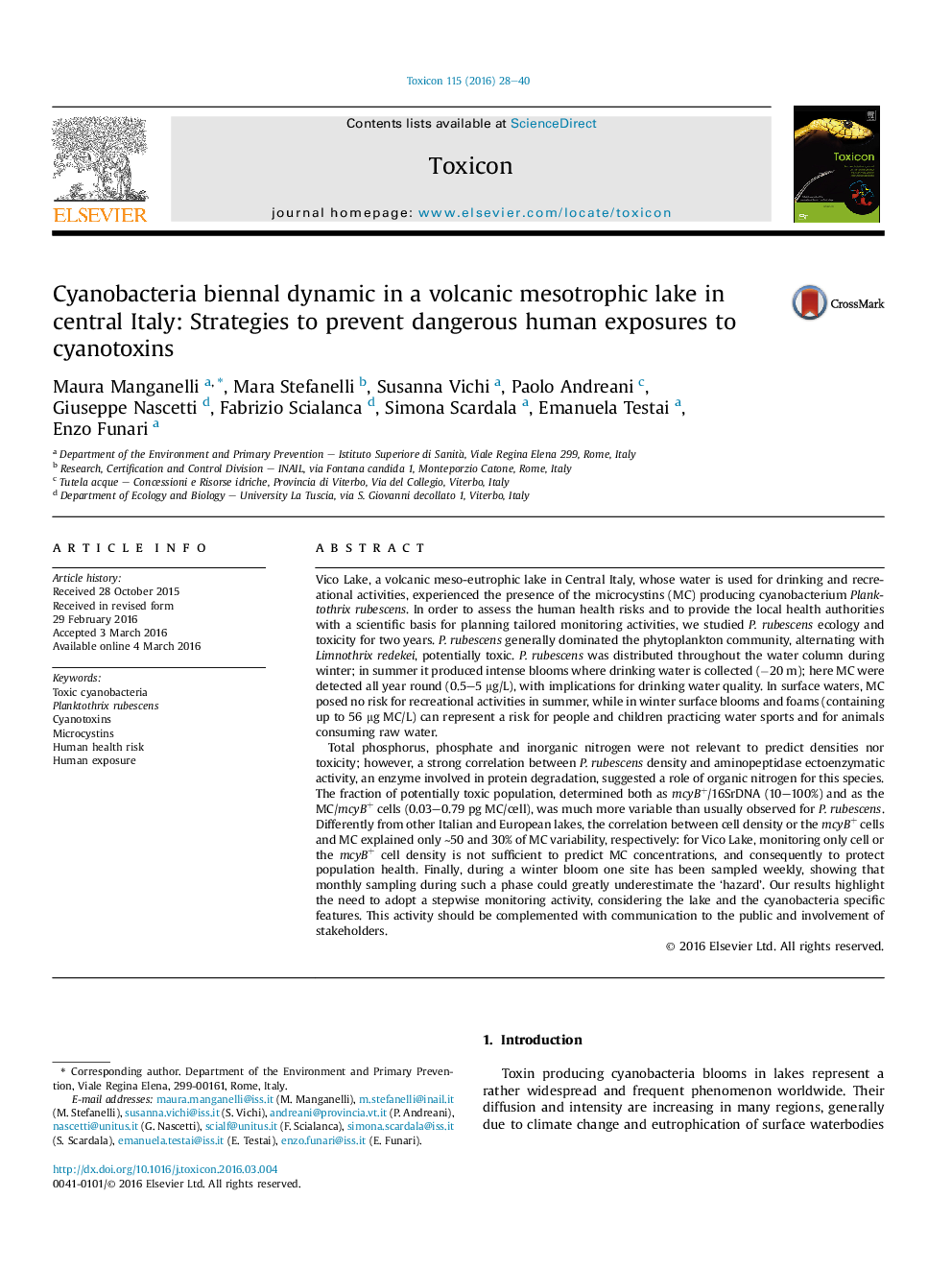| کد مقاله | کد نشریه | سال انتشار | مقاله انگلیسی | نسخه تمام متن |
|---|---|---|---|---|
| 2064378 | 1544121 | 2016 | 13 صفحه PDF | دانلود رایگان |

• In mesotrophic Vico lake the dominant Planktothrix rubescens alternated with Limnothrix redekei.
• P. rubescens MCs were regularly found at drinking water offtake depth (0.5–5 μg/L).
• Dissolved peptides from recycling activities were used as cyanobacteria N source.
• P. rubescens mcyB+/16SrDNA varied largely (10–100%) explaining little MC variation.
• Weekly scale bloom changes are important for monitoring activities and human health.
Vico Lake, a volcanic meso-eutrophic lake in Central Italy, whose water is used for drinking and recreational activities, experienced the presence of the microcystins (MC) producing cyanobacterium Planktothrix rubescens. In order to assess the human health risks and to provide the local health authorities with a scientific basis for planning tailored monitoring activities, we studied P. rubescens ecology and toxicity for two years. P. rubescens generally dominated the phytoplankton community, alternating with Limnothrix redekei, potentially toxic. P. rubescens was distributed throughout the water column during winter; in summer it produced intense blooms where drinking water is collected (−20 m); here MC were detected all year round (0.5–5 μg/L), with implications for drinking water quality. In surface waters, MC posed no risk for recreational activities in summer, while in winter surface blooms and foams (containing up to 56 μg MC/L) can represent a risk for people and children practicing water sports and for animals consuming raw water.Total phosphorus, phosphate and inorganic nitrogen were not relevant to predict densities nor toxicity; however, a strong correlation between P. rubescens density and aminopeptidase ectoenzymatic activity, an enzyme involved in protein degradation, suggested a role of organic nitrogen for this species. The fraction of potentially toxic population, determined both as mcyB+/16SrDNA (10–100%) and as the MC/mcyB+ cells (0.03–0.79 pg MC/cell), was much more variable than usually observed for P. rubescens. Differently from other Italian and European lakes, the correlation between cell density or the mcyB+ cells and MC explained only ∼50 and 30% of MC variability, respectively: for Vico Lake, monitoring only cell or the mcyB+ cell density is not sufficient to predict MC concentrations, and consequently to protect population health. Finally, during a winter bloom one site has been sampled weekly, showing that monthly sampling during such a phase could greatly underestimate the ‘hazard’. Our results highlight the need to adopt a stepwise monitoring activity, considering the lake and the cyanobacteria specific features. This activity should be complemented with communication to the public and involvement of stakeholders.
Journal: Toxicon - Volume 115, 1 June 2016, Pages 28–40